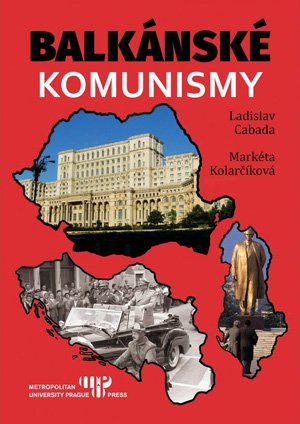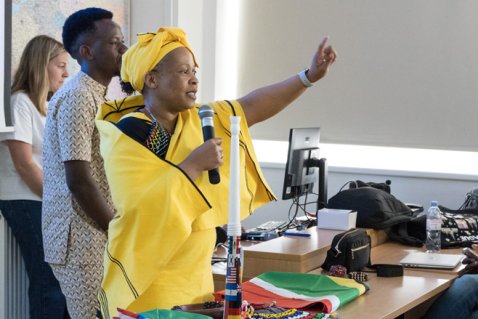CABADA, Ladislav; KOLARČÍKOVÁ, Markéta. Balkánské komunismy

1st ed. Prague: Metropolitan University Prague Press and Libri, 2016. ISBN 978-80-87956-41-0
Communist regimes represent one of the most visible groups of non-democratic regimes. Contemporary political science focuses both on the regimes existing until now, such as in People´s Republic of China, North Korea or Cuba, as well as on the regimes that ended their existence during the third wave of democratic transition. All these analyses are framed with more general theoretical debate about the non-democratic regimes – totalitarian and authoritarian. The aim of our book is to apply selected theories and concepts of totalitarian regimes on selected set of historical communist regimes from the Balkan region.
In the first part of our book we present comprehensive overview of contemporary theoretical work on non-democratic regimes. Specifically, we focus on the distinction between totalitarian and authoritarian communist regimes. Furthermore, we operationalize some concepts that are later applied on selected cases. Firstly, we focus on the concept of sultanistic regimes presented in the work of J. J. Linz and H. E. Chehabi. Next to other characteristic, these regimes are based on the omnipotent and basically unlimited role and position of the leader. Despite the class rhetoric in many communist regimes we observe the specific role of the leader. In some case such role is developed towards cult of personality and identification of the regime and ideology with the leader. This is the reason why we find the concept of sultanistic regimes useful also for our analysis.
As the second theoretical framework we use the work of H. Kitschelt focusing on different types of communist regimes. Studying the post-communist system diversity, Kitschelt offered the theory of different endogenous characteristics and development of communist regimes – patrimonial, national-accommodative and bureaucratic-authoritarian. We assume that the regimes included in our analysis tend to the same label, namely the patrimonial. We also presume that such nature of the society and political elite (political culture) created preconditions for the attempts to develop independent types of communist regimes in some Balkan countries.
Next to the two theoretical concepts presented above we use also other such as concept of political religion and theory of modernity with specific focus on modernisation oligarchy as the specific societal structure and Bernik´s theory of “obmodernisation”.
As the cases studies we selected three Balkan countries – Albania, Romania, and Yugoslavia. After the Second World War, in all these countries the communist regimes were created. Albanian and Yugoslav communists became since the very beginning the brave pupils of J. Stalin, while Romania was put under string control of Soviet Union. Indeed, in Yugoslavia (since 1948), Albania (since 1950s/1960s), as well as in Romania (since the half of 1960s) we can observe strong tendencies to independent development of own, domestic version of communist regime. In all cases we also observe the omnipotent political leader who develops his rule as personal dictatorship.
In the analysis we focus on the common characteristics as well as differences of the three analysed cases. Although they present themselves as very different regarding the communist dogmatic, the practical organisation of internal political life does not seem as different. The Yugoslav exception based on the development of “socialist self-administration” system does not appear as distinctive as expected, compared with the Albanian and Rumanian case.
The communist leaders in all analysed countries are examined within the quasi-religious system creating the situation of political religion. Next to the leaders – Hoxha, Ceaucescu and Tito – we focus also on the development of the political regimes. Special attention is devoted to the periodization of the regime development, i.e. to the distinctive changes and periods that might be detected. Last, but not least we pay attention to the end of the personal dictatorship after the dead of all leaders.
As the main result of our analysis we can depict that all regimes presented as their main ambition the modernisation, either economic (industrialisation) or broader (changes in societal structure, family law etc.). In reality, with the exception of the Yugoslav case, the opposite happened and the new regimes usually confirmed or even strengthened the traditional models of nepotism, men domination, anti-liberal organisation of family etc. In Yugoslavia, only after Tito´s death these traditional instruments were also shown among some visible leaders and in some parts of the country. We assume that also this clash of modernity vs. obmodernity led to the demise of the country.



